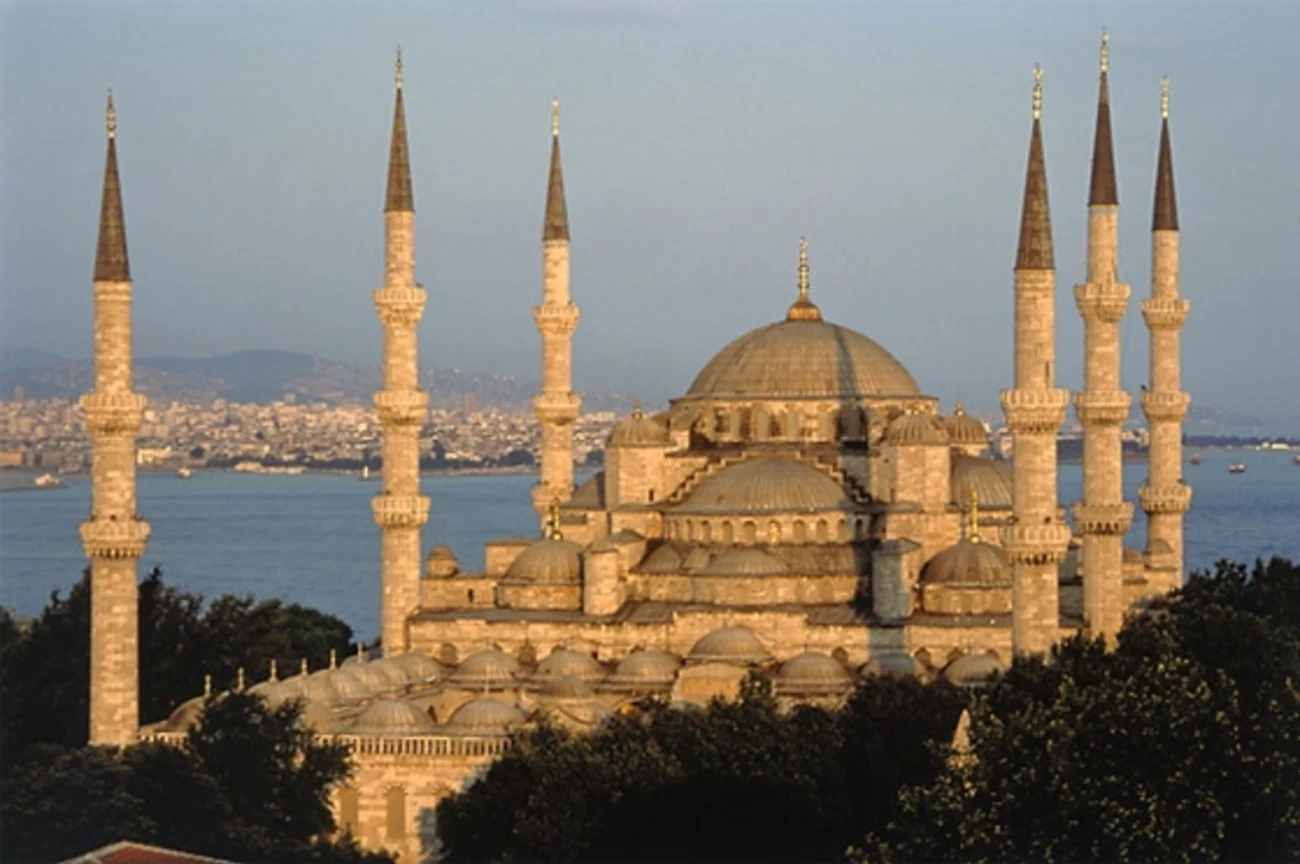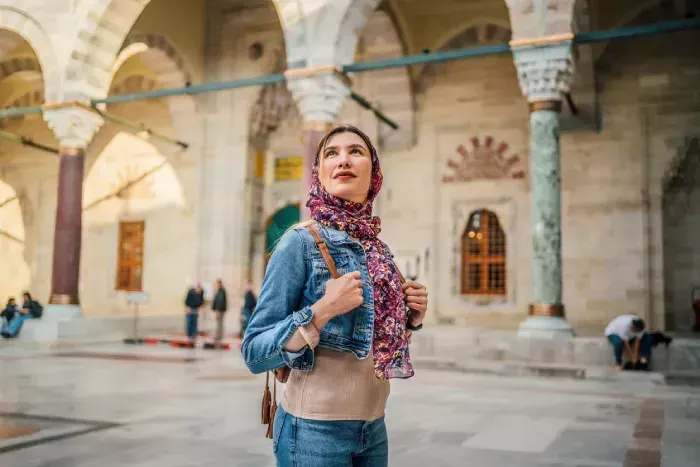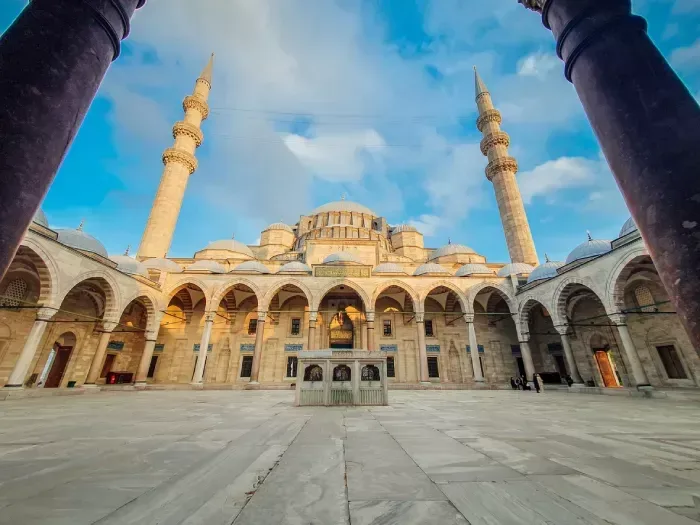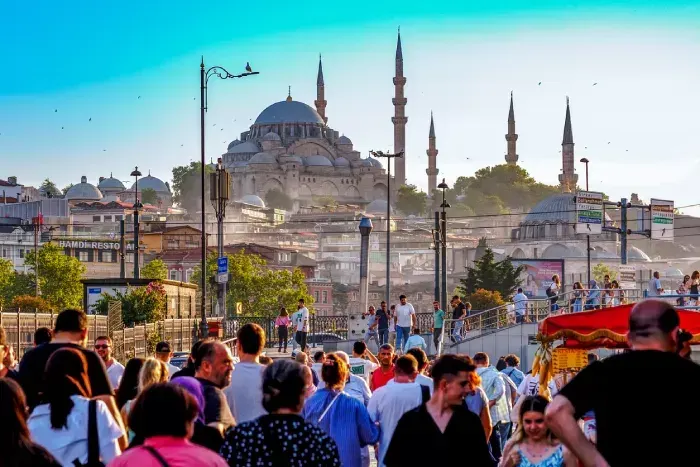Süleymaniye Mosque: Essential Guide for Istanbul Visitors
Süleymaniye Mosque and Complex is a highly sophisticated and historic complex comprised of a mosque, madrasas, and mausoleums.

Süleymaniye Mosque stands as a part of outstanding work in architecture and is a sign of Istanbul's enriched history and cultural heritage. This overwhelmingly beautiful mosque stands on the Third Hill of Istanbul and was commissioned by Sultan Süleyman the Magnificent in the 16th century. It was designed by Mimar Sinan-one of the most famous Ottoman architects, who showcased the skillful work with much detail found in craftsmanship during the age.
The moment you step into the mosque, you are left speechless with the grandeur and beauty that surrounds you: the intricate details of marble columns, the delicacy of the pattern of the tiles, and the mesmerizing play of light and shadow all combine to create an atmosphere of tranquility and reverence. Such remarkable preservation and historical importance meant that UNESCO adopted the mosque as a World Heritage Site in 1985, together with the treasured Historic Areas of Istanbul.
Whether you are interested in history, architecture, or spiritual fulfillment, the visit to the Süleymaniye Mosque will stay long in the memory and imagination of your mind and heart.

History Behind the Monument
Sultan Suleiman's vision
Power swept through the Ottoman Empire as Sultan Suleiman the Magnificent ascended his throne in 1520. It was within this golden age that the Sultan nurtured a dream for Süleymaniye Mosque-one born not just from his spiritual devotion, but from imperial aspiration.
Suleiman-the tenth in the illustrious line of the Ottoman dynasty- wanted to make a mosque in Istanbul, not like any other. His vision was beyond the stones and mortar brick, every well-placed, telling the story of Ottoman glory, military triumph, and economic prosperity.
Architect Sinan's masterpiece
Then destiny smiled on the Sultan's dream when he chose Mimar Sinan as the chief architect; by the time his hands started shaping the Süleymaniye, from 1550 until its completion in 1557, Sinan's brilliant mind had already guided imperial architecture for nearly three decades.
Among the 300 magnificent structures that Sinan left scattered over Ottoman lands, the Süleymaniye Mosque is the brightest gem. He poured his skill and craftsmanship into it in a determined effort to bring perfection to the artistic principles defining Ottoman architecture. His genius merged Islamic grace with Byzantine grandeur, giving birth to an architectural language wholly his own.
Yet Sinan's masterpiece served purposes greater than the prayer. Within its walls, the tapestry of public services unfolded-from healing hands that tended to the sick in its hospital to steam rising from kitchen cauldrons feeding the poor, to the wisdom aired through its madrasahs, and Islamic schools. Every archway and courtyard told stories of Suleiman's commitment to the welfare of his people brought alive by the architect's poetic touch.
Architectural Wonder
At the heart of Süleymaniye Mosque, sacred geometry reaches toward the sky, with its central dome soaring 53 meters high and spanning 26.5 meters across. Four sturdy piers support this heavenly burden, their arched structures reaching upward to embrace the dome above.
The grand dome design
Light filters through 32 windows carved into the drum of the dome, bathing the worshippers with the glow of heaven. Two semi-domes embrace the central vault, and their curved surfaces flow like frozen waves. This stone symphony stretches down to the prayer hall, where thousands gather beneath the floating dome.
Four unique minarets
Stone sentinels mark the corners of the mosque, each minaret telling tales of Ottoman might:
- Twin giants pierce the clouds at 76 meters, each with three circular balconies
- Their shorter siblings rise 56 meters, each with two balconies
- Ten balconies in all tell stories of Suleiman, the tenth sultan of his line
Courtyard features
Noble columns of marble, granite, and deep-red porphyry stand guard beneath colonnaded walkways here. Visitors pass beneath an entrance portal where muqarnas honeycomb the triangular vault, framed by elegant pilasters.
The hands of artisans left their mark in precious Iznik tiles, their glazed surfaces forming window lunettes across the face of the prayer hall. A fountain graces the center of the courtyard-for beauty's sake alone true ablution fountains nestle discretely between the side doors of the prayer hall.
Hidden Treasures
Stone whispers secrets beneath Süleymaniye's grand façade. Each pillar, each inscription tells tales of empires past, of journeys across seas and deserts, of artisans whose hands shaped beauty from stone and script.
Ancient columns story
Mighty columns rise through centuries of history, gathered from distant corners of Ottoman lands. Four magnificent porphyry pillars stand sentinel, each honoring one of the four Caliphs. These stone giants traveled far:
- Istanbul yielded two granite columns
- Alexandria sent one across Mediterranean waves
- Baalbek yielded another to grace these halls
Ancient marble pieces, rescued from the forgotten buildings in Salonica and İznik, find a new purpose here. Deep porphyry columns paired with a masterful dance of twelve pink granite and ten white marble pillars at the hands of master craftsmen near the entrance.
Special inscriptions
Sacred words adorn every surface, born from the masterful strokes of Hasan Çelebi. Above the entrance are three rectangular panels with foundation inscriptions in Arabic script by Ebussuud Efendi.
Islamic tradition ordained the subtle beauty of the interior, avoiding gaudy displays in gold and jewels. Near the mihrab, sunlight streams through the finest examples of Sarhos Ibrahim's stained glass, painting prayers with rainbow light.
Heaven's words crown the peak of the dome, while God's names and Muhammad's blessed signature float above lower windows. Twin rosettes bloom on either side of the mihrab: white letters dancing on royal blue, framed by borders where turquoise leaves unfurl.

Süleymaniye Complex
Beyond the mosque, the Süleymaniye Complex speaks to the Ottoman ideal of a self-contained community. It contains a madrasa or Islamic school, a hospital, a library, and a hammam or Turkish bath, all institutions that once served both the elite and the poor of the city. In its peaceful courtyards are the tombs of Sultan Süleyman and his wife, Hürrem Sultan, where a glimpse into Ottoman history can be found. This complex, with its view over the Golden Horn, is still very much a center of cultural and spiritual life, melding the echoes of the past with the present.
Visitor Experience Today
With its gates open daily to devout and visitors alike, this mosque operates from approximately 9:00 AM to 6:00 PM. Admission to this blessed sanctuary is free, but guests are encouraged to plan visits around scheduled prayer times.
Guided tour options
Stories come alive through expert guides who reveal centuries of history within these walls. It's easy for travelers to get aboard the T1 tram, gliding from Sultan Ahmet Square to the bustling stop at Eminönü.
Best viewpoints
Behind the back gates, green lawns stretch up to heaven. Here, Istanbul unfurls like a living tapestry - Bosphorus waters glint in sunlight, while minarets pierce clouds above the Golden Horn.
Local food spots nearby
Aromatic steam rises from copper pots of kuru fasulye, white beans simmered to perfection in neighborhood kitchens. Terrace cafés perch like birds' nests against ancient walls, offering sweet tea and sweeping views across minarets and domes. Modern pilgrims feast where sultans once fed the poor: restaurants now fill the mosque's historic kitchen spaces.
Modern comforts mingle with history: clean restrooms and a peaceful tea garden. Admission is free, but appreciative hearts often make donations. Modest dress respects these sacred places-helpful attendants offer covering garments at the entrance for those who need them.
Time stands still within the sacred walls of Süleymaniye, where Ottoman genius meets divine inspiration. Sultan Suleiman dreamed of greatness, yet Mimar Sinan's masterwork soared beyond mortal ambition, weaving Islamic grace with Byzantine splendor into stone poetry.
Each carefully placed stone speaks for itself: a central dome floating 53 meters above the heads of worshipers, ancient columns bearing tales from faraway coasts. Prayers reverberate through its halls of centurion devoutness, sunbeams shimmering across peerless calligraphies and colored tiles. Viewed through intricately laced stone-framed windows, the treasures of Istanbul unfold before wonder-struck eyes.
Today's pilgrims walk paths smoothed by countless feet before them, their treasures protected by UNESCO's blessing, and life in the neighborhoods pulses along ancient walls: kitchens, fragrant and serene; gardens, places where very ancient traditions come alive. Here, with high-stretching domes and skyward-reaching minarets, Istanbul pulses a heart with the pulse, offering timeless wonder moments against glimpses of history to its visitors.

Customize Your Dream Vacation!
Get in touch with our local experts for an unforgettable journey.
Plan Your TripFAQs
Q1. Is Süleymaniye Mosque free?
Yes, entry to Süleymaniye Mosque is completely free for all visitors. As one of Istanbul’s most iconic landmarks, it welcomes both worshippers and tourists without any admission fee. However, visitors are expected to respect prayer times.
Q2. What is special about the Süleymaniye Mosque?
The Süleymaniye Mosque is a masterpiece of Ottoman architecture, designed by Mimar Sinan for Sultan Süleyman. Its grand dome, soaring minarets, and intricate details showcase 16th-century craftsmanship. Part of a larger complex, it once served as a hub for education and social services. Perched on a hill, it offers stunning views of Istanbul, blending history, spirituality, and architectural brilliance.
Q3. What is the dress code for the Suleymaniye Mosque?
Visitors should dress modestly. Women should cover their legs, arms, and hair, while men should have covered legs. Loaner coverings are available at the entrance if needed.
Q4. How much time does it take to visit the Süleymaniye Mosque?
The time needed to visit the Süleymaniye Mosque depends on your pace and interest. However, you can generally expect to spend one to two hours exploring the mosque and its surrounding complex.
Q5. How many domes does the Süleymaniye Mosque have?
The Süleymaniye Mosque features a central dome supported by two semi-domes and several smaller domes, creating a harmonious and balanced architectural design.
Q6. What materials were used in the Süleymaniye Mosque?
The Süleymaniye Mosque was built using high-quality marble, granite, and porphyry, sourced from different parts of the Ottoman Empire. The walls and columns feature finely cut stone, while the intricate interior decorations include Iznik tiles, stained glass, and carved woodwork.
First time in Turkey! check out the best Turkey Travel Packages!







































